TLDR Ultrasonography in dermatology improves diagnosis and treatment of skin conditions.
Dermatologic ultrasonography, a rapidly growing field over the past decade, had significant applications in modifying patient management by improving the assessment of various dermatologic conditions, including benign and malignant tumors, vascular anomalies, inflammatory entities, aesthetic complications, and nail lesions. It offered superior axial spatial resolution compared to other imaging techniques, thanks to advancements in high- and ultra-high-frequency probes. The routine use of ultrasonography in dermatology was reported to enhance diagnostic accuracy, track disease activity, and assess severity, thereby supporting improved patient treatment.
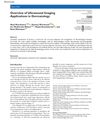 22 citations
,
March 2021 in “Journal of Cutaneous Medicine and Surgery”
22 citations
,
March 2021 in “Journal of Cutaneous Medicine and Surgery” Ultrasound is a useful, non-invasive tool in dermatology for diagnosing skin conditions and guiding treatments, but it has some limitations.
76 citations
,
May 2020 in “Ultraschall in der Medizin - European Journal of Ultrasound” The EFSUMB created basic guidelines for using ultrasound in skin-related medical practice.
41 citations
,
November 2019 in “Journal of Ultrasound in Medicine” Ultrasound can help detect early signs and severity of hidradenitis suppurativa.
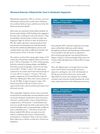 30 citations
,
June 2015 in “Dermatologic Surgery”
30 citations
,
June 2015 in “Dermatologic Surgery” Ultrasound shows 80% of Hidradenitis Suppurativa patients have abnormal hair tracts that may worsen the condition.
 17 citations
,
June 2014 in “Journal of Ultrasound in Medicine”
17 citations
,
June 2014 in “Journal of Ultrasound in Medicine” Abnormal cuticle and hair shaft medulla cause hair loss in androgenetic alopecia; sonography helps diagnose and manage it.
108 citations
,
October 2005 in “Journal of Ultrasound in Medicine” Ultrasonography improves pilomatricoma diagnosis accuracy.
 22 citations
,
March 2021 in “Journal of Cutaneous Medicine and Surgery”
22 citations
,
March 2021 in “Journal of Cutaneous Medicine and Surgery” Ultrasound is a useful, non-invasive tool in dermatology for diagnosing skin conditions and guiding treatments, but it has some limitations.
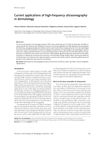 65 citations
,
January 2017 in “Postępy Dermatologii i Alergologii”
65 citations
,
January 2017 in “Postępy Dermatologii i Alergologii” High-frequency ultrasonography is a useful but underused tool in dermatology for assessing skin cancers, monitoring diseases, and evaluating treatments.
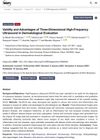 January 2025 in “Diagnostics”
January 2025 in “Diagnostics” 3D high-frequency ultrasound can help diagnose skin and hair conditions without invasive biopsies.
 336 citations
,
August 2015 in “European Journal of Epidemiology”
336 citations
,
August 2015 in “European Journal of Epidemiology” The Rotterdam Study found risk factors for elderly diseases, links between lifestyle and genetics with health conditions, and aimed to explore new areas like DNA methylation and sensory input effects on brain function.
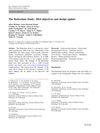 266 citations
,
November 2013 in “European Journal of Epidemiology”
266 citations
,
November 2013 in “European Journal of Epidemiology” The Rotterdam Study aims to understand disease causes in the elderly and has found new risk factors and genetic influences on various conditions.






